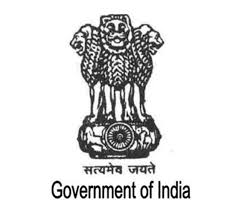The Indus Valley civilization, one of the world's oldest, flourished during the 3rd and 2nd millennia B.C. and extended into northwestern India. Aryan tribes from the northwest infiltrated the Indian subcontinent about 1500 B.C.; their merger with the earlier Dravidian inhabitants created the classical Indian culture. The Maurya Empire of the 4th and 3rd centuries B.C. - which reached its zenith under ASHOKA - united much of South Asia. The Golden Age ushered in by the Gupta dynasty (4th to 6th centuries A.D.) saw a flowering of Indian science, art, and culture. Islam spread across the subcontinent over a period of 700 years. In the 10th and 11th centuries, Turks and Afghans invaded India and established the Delhi Sultanate. In the early 16th century, the Emperor BABUR established the Mughal Dynasty, which ruled India for more than three centuries. European explorers began establishing footholds in India during the 16th century.
By the 19th century, Great Britain had become the dominant political power on the subcontinent. The British Indian Army played a vital role in both World Wars. Years of nonviolent resistance to British rule, led by Mohandas GANDHI and Jawaharlal NEHRU, eventually resulted in Indian independence, which was granted in 1947. Large-scale communal violence took place before and after the subcontinent partition into two separate states - India and Pakistan. The neighboring nations have fought three wars since independence, the last of which was in 1971 and resulted in East Pakistan becoming the separate nation of Bangladesh. India's nuclear weapons tests in 1998 emboldened Pakistan to conduct its own tests that same year. In November 2008, terrorists originating from Pakistan conducted a series of coordinated attacks in Mumbai, India's financial capital. Despite pressing problems such as significant overpopulation, environmental degradation, extensive poverty, and widespread corruption, economic growth following the launch of economic reforms in 1991 and a massive youthful population are driving India's emergence as a regional and global power.
India is a federal parliamentary republic.
Source: CIA World Factbook
Members:
Resources
Displaying 51 - 55 of 91Evaluation report on Border Area Development Programme
The Border Area Development Programme (BADP) was introduced in the Seventh Plan as a Centrally Sponsored Scheme (CSS) with the objective of infusing a sense of security among the people and building the much needed social and physical infrastructure to propel normal development activities.
Common Property Resources in India
The report was produced by National Sample Survey Organisation (NSSO), Government of India on Common Property Resources (CPR) in rural areas of the country, as part of its 54th Round survey conducted during January-June, 1998.
It presents a brief introduction to the perspectives and discussed on the definitions and concepts of CPR. The enquiry aimed at providing certain basic statistics on the size of CPRs, type of benefits derived and the magnitude and proportion of households making use of CPRs.
Leasing of degraded forest lands: Working Group's report on the prospects of making degraded forests available to private entrepreneurs
The Planning Commission set up a Working Group to examine the prospects of leasing out of degraded forests to the private entrepreneurs/ Forest Corporations. The terms of reference for the Group were:-
· Economic, social and environmental feasibility of leasing or otherwise making degraded forest land to the
private entrepreneurs/ Forest Corporations.
· Implication of Ninth Plan, forest policy, forest law on this issue.
The Provisions of the Panchayats (Extension to Scheduled Areas) Act, 1996
The Provisions of the Panchayats (Extension to Scheduled Areas) Act, 1996 or PESA is a law enacted by the Government of India for ensuring self governance through traditional Gram Sabhas for people living in the Scheduled Areas of India. Scheduled Areas are areas identified by the Fifth Schedule of the Constitution of India.
Evaluation Report On Western Ghats Development Programme In Maharashtra (A Joint Study)
The hill areas of the country especially the Himalayan and the Western Ghats Regions, were recognised as areas which required to be given special attention for restoration of ecological balance. In pursuance of the policy of accelerating the development of hill areas in the country and at the suggestion of the National Development Council (1972) the centrally sponsored Western Ghats Development Programme (WGDP) was introduced in 1974-75 for integrated developoment of Western Ghats Region.

